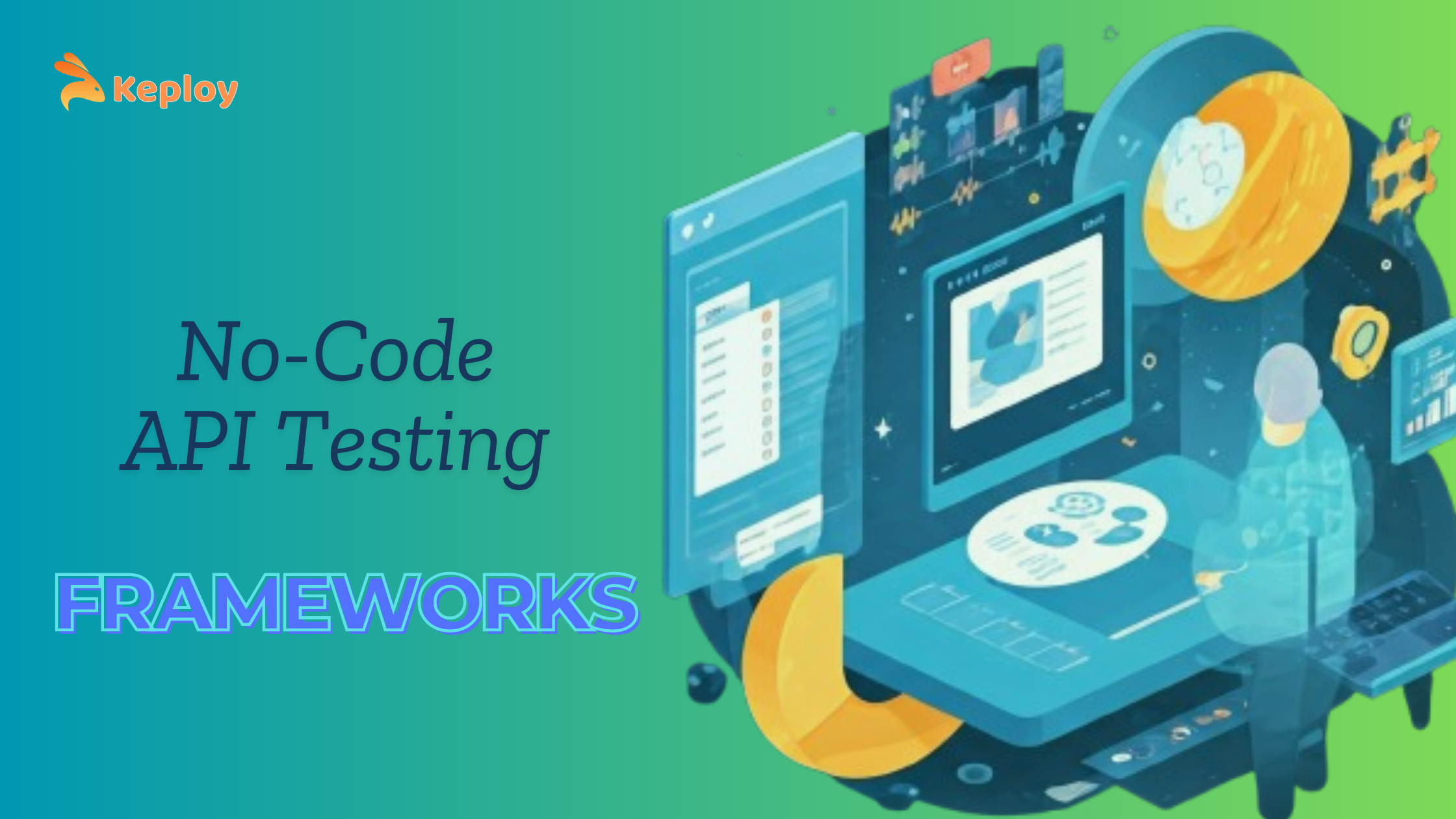In a fast-paced world of software development nowadays, API reliability and performance are most crucial. APIs are called the lifeblood of modern applications in the sense of enabling seamless intercommunication among systems/applications. In that spirit, no-code platforms for API testing are now an extremely useful tool for giving teams the capability to test APIs without extensive programming knowledge. Such platforms allow an intuitive interface and simplify the testing process while also engaging the technical and nontechnical groups.
What Are No-Code API Testing Frameworks?
No-code API testing frameworks that allow users to design and implement API tests without any coding via a visual interface. They support REST, SOAP, GraphQL, and other popular API protocols and are often integrated with a host of other tools forming a complete testing environment.
Benefits of No-Code API Testing Frameworks

-
Accessibility: Gives team members who are not coders an opportunity to participate in API testing.
-
Efficiency: Speed up the testing process with intuitive interfaces and reusable test components.
-
Collaboration: Enhance the communication between developers, testers, and business analysts.
-
Cost-Effectiveness: Minimize the dependence on specialized coding skills. Therefore, the training and development costs are reduced.
Top No-Code API Testing Tools
1. Keploy
Keploy is an innovative, AI-powered API testing platform designed to simplify integration and unit testing. It enables teams to achieve up to 90% test coverage within minutes by automatically generating test cases and mocks. Keploy is open-source and integrates seamlessly into CI/CD pipelines, making it an excellent choice for modern development workflows.
Visit Keploy
2. Postman
A widely-used platform that offers a comprehensive suite for API development and testing. It features a user-friendly interface, collaboration capabilities, and supports both manual and automated testing. Postman’s extensive collection of integrations and built-in tools makes it a go-to choice for many teams.
3. SoapUI
An open-source tool designed for testing SOAP and REST APIs. It provides advanced features for functional, security, and load testing. SoapUI is well-suited for projects that require detailed testing of SOAP services.
4. Testsigma
A cloud-based test automation platform that supports API testing without coding, enabling continuous testing and integration. Testsigma’s intuitive interface and scalability make it a strong contender for teams looking to automate their API testing processes.
5. ACCELQ
ACCELQ is a powerful codeless test automation platform that offers robust API testing capabilities. It provides end-to-end test management features and integrates seamlessly with CI/CD pipelines. ACCELQ’s ability to automate complex workflows without coding makes it ideal for both small and large-scale projects.
6. Katalon Studio
An all-in-one test automation solution that offers codeless API testing capabilities, supporting both RESTful and SOAP protocols. Katalon Studio provides a rich set of features, including test case management, debugging tools, and reporting dashboards.
Comparison Table of API Testing Tools
|
Tool |
Key Features |
Best For |
Pricing |
|
Keploy |
AI-powered, automatic test generation, seamless CI/CD integration, open-source. |
Quick test generation and automation. |
Free (Open Source) |
|
Postman |
User-friendly interface, collaboration tools, extensive integrations. |
API development and team collaboration. |
Free and Paid Plans |
|
SoapUI |
Functional, load, and security testing for SOAP and REST APIs. |
Testing SOAP services and REST APIs. |
Free and Pro Plans |
|
Testsigma |
Cloud-based, continuous testing, codeless automation. |
Scalable API test automation. |
Paid Plans |
|
ACCELQ |
Codeless automation, robust API testing, CI/CD integration. |
Complex workflow automation. |
Paid Plans |
|
Katalon |
Rich features, debugging tools, reporting dashboards. |
All-in-one testing across protocols. |
Free and Paid Plans |
Selecting the Right Tool
When choosing a no-code API testing framework, consider the following factors:
-
Integration: Ensure compatibility with your existing development and CI/CD tools.
-
Scalability: Assess the tool’s ability to handle your project’s current and future testing needs.
-
Support and Community: Look for active user communities and robust customer support.
-
Cost: Assess the pricing structure to fit your budgetary restrictions.
Conclusion
The realm of testing APIs has grown leaps and bounds with these no-code testing frameworks. They are accessible and efficient, requiring no deep technological knowledge. There are many different tools available that allow teams to collaborate, reduce costs, and ensure decent performance for their APIs. The very right no-code tool can lead to a streamlined testing process and quality software products.
FAQs About No-Code API Testing Frameworks
1. What is a no-code API testing framework?
A no-code API testing framework is a tool that allows users to test APIs without writing code. These frameworks offer intuitive, visual interfaces for designing, executing, and managing API tests.
2. What are the benefits of using a no-code API testing tool?
The primary benefits include:
-
Ease of use: No programming knowledge is required.
-
Faster testing: Drag-and-drop functionality speeds up test creation.
-
Collaboration: Enables non-developers to participate in API testing.
-
Cost-efficiency: Reduces the need for specialized coding expertise.
3. Are no-code API testing tools suitable for large-scale applications?
Yes, many no-code tools are scalable and designed to handle large-scale testing needs. They often support complex scenarios such as performance testing, load testing, and security testing.
4. Can no-code tools integrate with CI/CD pipelines?
Yes, most modern no-code API testing tools support integration with CI/CD pipelines, allowing automated testing as part of the development workflow.
5. Are there any limitations to no-code API testing tools?
Some limitations include:
-
Reduced flexibility for highly complex or custom scenarios.
-
Limited support for niche programming languages or protocols in certain tools.
-
Dependency on the tool’s features and updates.
6. What types of APIs can be tested using no-code tools?
No-code tools can test a wide variety of APIs, including:
-
REST APIs
-
SOAP APIs
-
GraphQL APIs
-
gRPC APIs
7. Do no-code tools support automated regression testing?
Yes, many no-code API testing tools support automated regression testing by enabling users to create reusable test cases that can be executed repeatedly.
8. How do I select the best no-code API testing framework for my project?
Select a tool with the following considerations:
-
The complexity of your testing requirements.
-
Integration capabilities with your existing tools.
-
Scalability for future needs.
-
Pricing and support options.


Leave a Reply